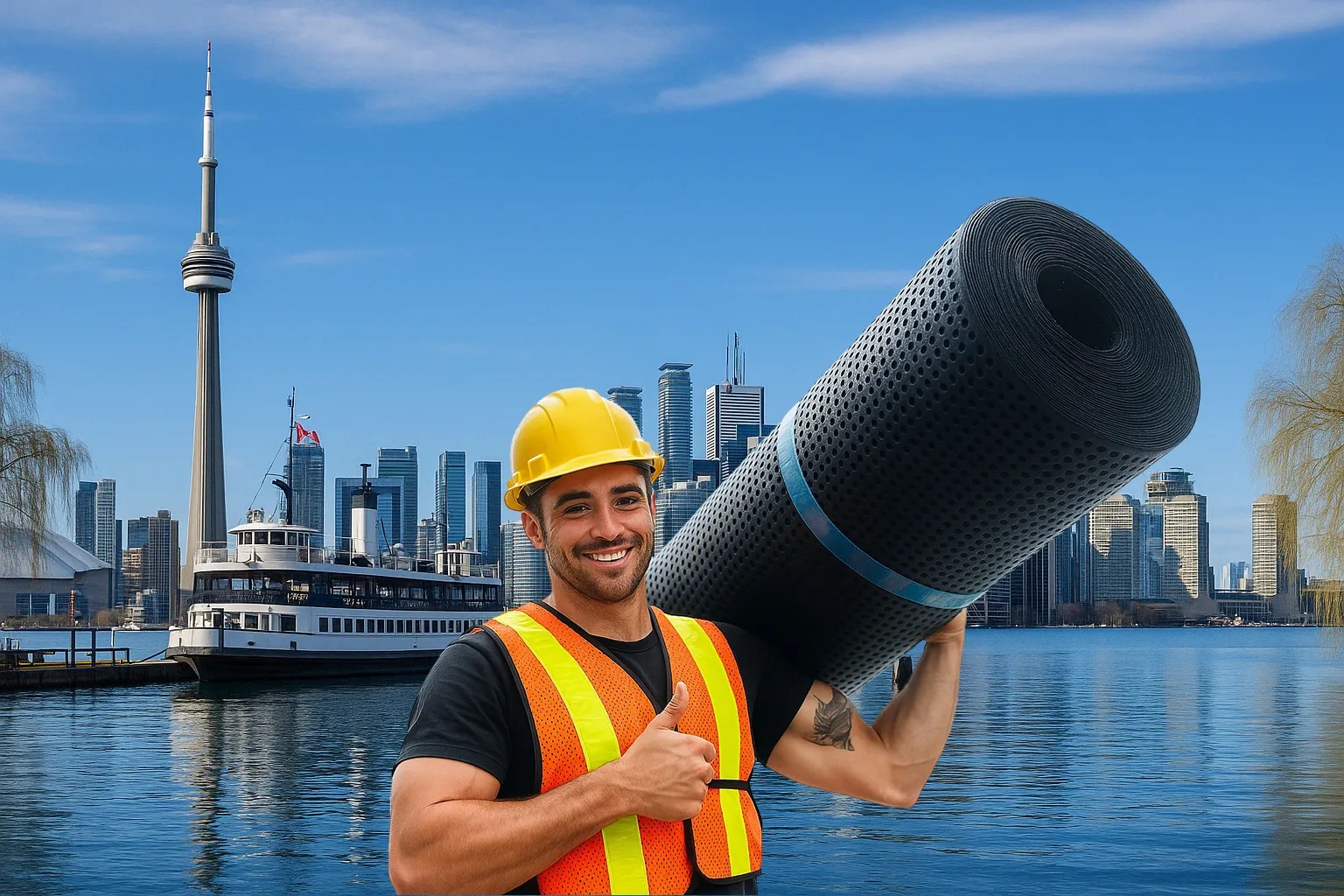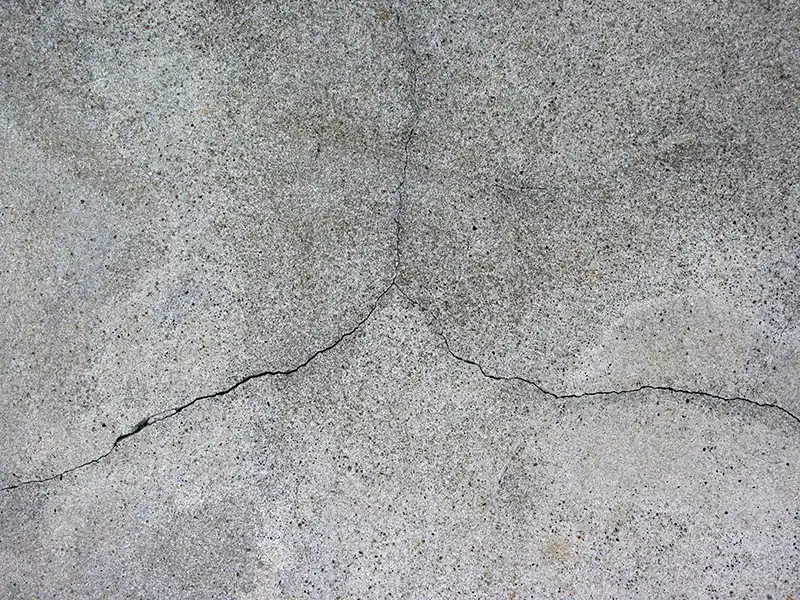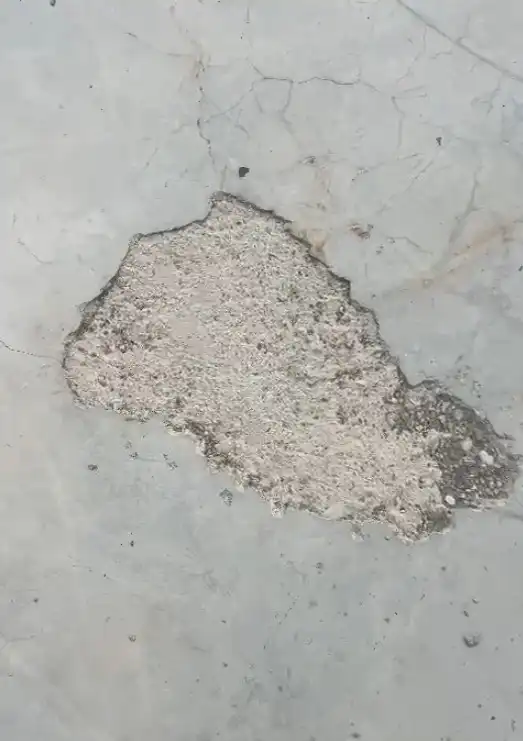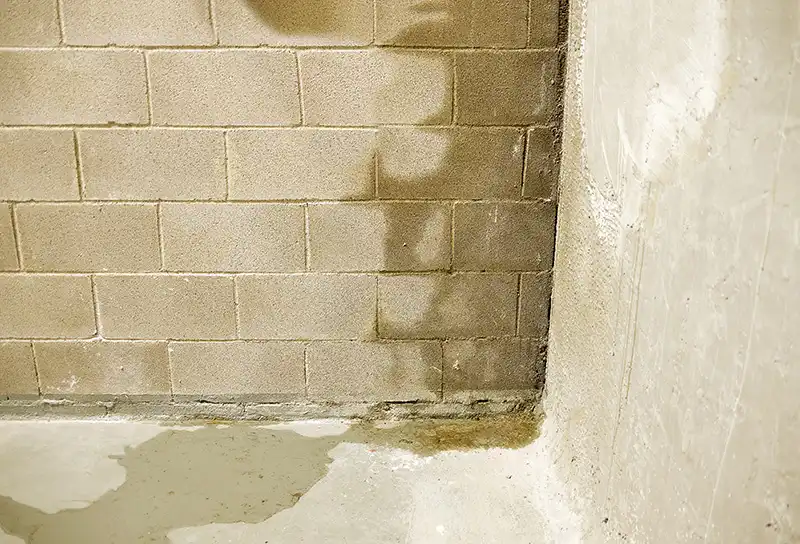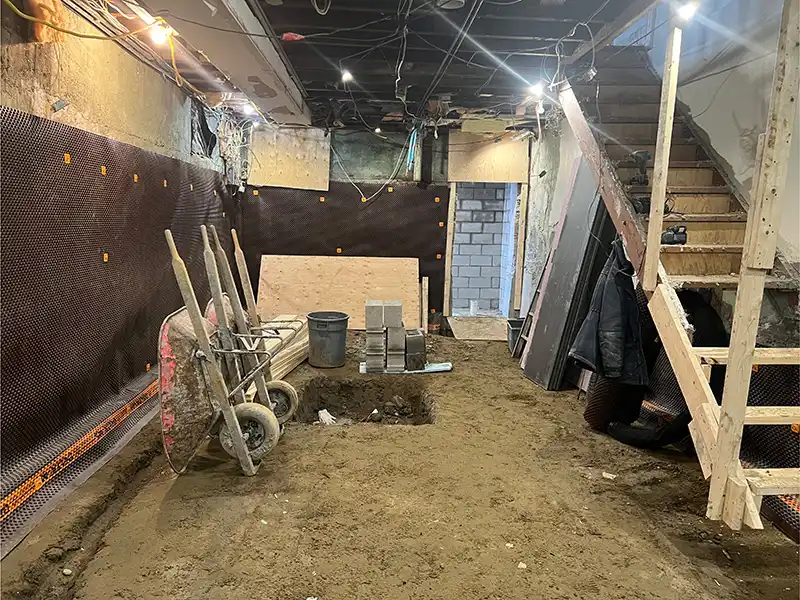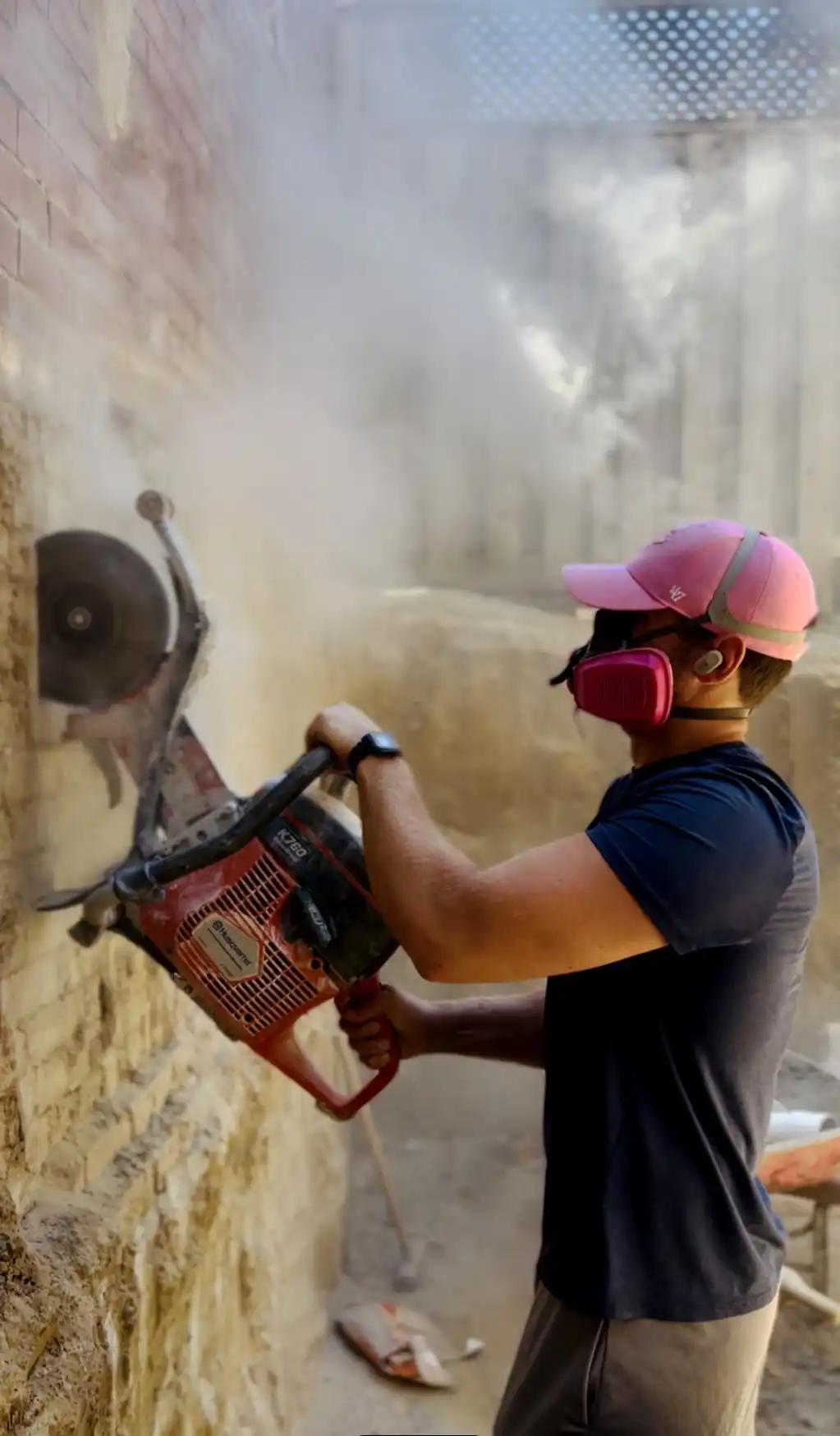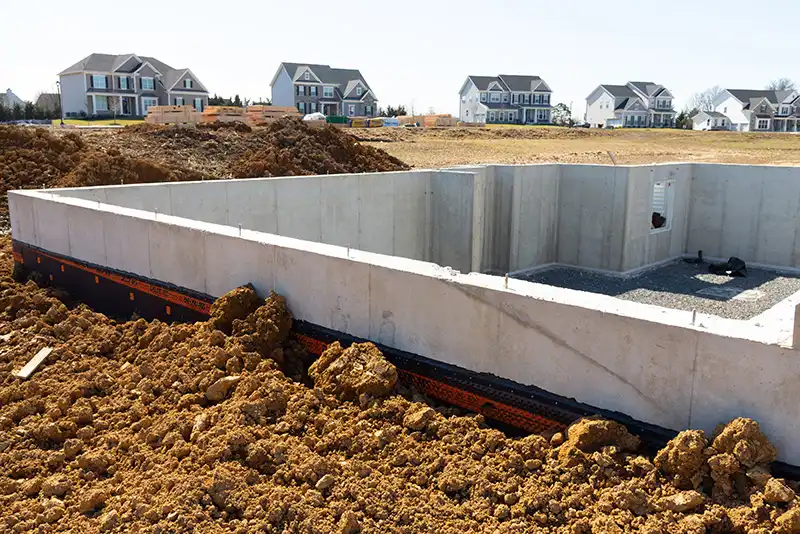Professional Pump Systems
Protect your basement with reliable pump systems designed for Toronto’s water challenges. From sump pumps to sewage systems, we provide complete solutions.
Primary Pump Systems
Sump Pump Installation
Your First Line of Defense
Sump pumps are essential for managing groundwater, protecting basements from flooding during storms, spring thaws, and high water table conditions. Professional installation ensures reliable operation when you need it most.
System Components:
- Submersible or pedestal pumps
- Reinforced sump basins
- Check valves and discharge lines
- Battery backup systems
- Water alarms and monitoring
Key Features:
- 24/7 flood protection
- Automatic operation
- Power outage backup
- Minimal maintenance
- Long service life
Applications:
- Groundwater management
- Interior drainage systems
- High water table areas
- Storm water control
- Foundation protection
Sewage Pump Systems
Below-Grade Waste Management
Sewage pumps enable basement bathrooms and laundry facilities below sewer line level. These specialized pumps handle solid waste and gray water, making basement finishing possible.
System Types:
- Sewage ejector pumps
- Grinder pumps
- Effluent pumps
- Complete basin systems
- Macerating toilets
Key Differences from Sump Pumps:
- Handles solid waste
- Sealed systems required
- Venting necessary
- Higher capacity motors
- Different maintenance needs
DIY Installation Guide
For the Ambitious Homeowner
While professional installation is recommended, our comprehensive DIY guide helps capable homeowners understand the complete installation process, requirements, and potential challenges.
Guide Includes:
- Tool requirements
- Step-by-step process
- Code compliance
- Safety considerations
- When to call professionals
Critical Considerations:
- Electrical requirements
- Permit needs
- Discharge regulations
- Warranty implications
- Common mistakes
Backup Protection Systems
Battery Backup Pumps
Power Outage Protection
Storms that cause flooding often knock out power. Battery backup systems automatically activate during outages, providing hours of pumping capacity when primary pumps can’t operate.
Backup Features:
- Automatic activation
- Independent operation
- Status monitoring
- Maintenance alerts
- Extended run time
Options:
- DC backup pumps
- Combination systems
- Inverter systems
- Multiple battery banks
- Smart monitoring
Water-Powered Backups
No Electricity Required
Using municipal water pressure, these pumps operate without electricity or batteries, providing unlimited runtime during extended outages.
Advantages:
- No battery maintenance
- Unlimited operation
- Simple mechanism
- Reliable function
- Long lifespan
Considerations:
- Water usage costs
- Pressure requirements
- Municipal regulations
- Installation complexity
- Flow limitations
Pump Selection Guide
Choosing the Right Pump
Sump Pumps - Choose When:
- Managing groundwater
- Interior drainage installed
- High water table present
- Basement flooding history
- Foundation protection needed
Sewage Pumps - Choose When:
- Basement bathroom planned
- Below-grade laundry
- Kitchen or wet bar addition
- Complete basement finishing
- Multi-unit properties
Backup Systems - Essential When:
- Finished basement present
- Valuable storage below grade
- History of power outages
- High water table area
- Peace of mind desired
Pump Sizing & Capacity
Proper Pump Selection
Sump Pump Sizing:
- 1/3 HP: Standard homes, moderate water
- 1/2 HP: Larger homes, more water
- 3/4 HP: High volume, commercial
- 1 HP+: Extreme conditions
Flow Rate Considerations:
- Gallons per minute (GPM)
- Total dynamic head (TDH)
- Discharge pipe size
- Run cycle frequency
- Basin size impact
Sewage Pump Requirements:
- 1/2 HP: Single bathroom
- 3/4 HP: Multiple fixtures
- 1 HP: Heavy use/commercial
- 2 HP: Grinder applications
Installation Best Practices
Professional Standards
Sump Pump Installation:
- Basin placement at lowest point
- Proper sizing for water volume
- Check valve installation
- Discharge routing away from foundation
- Electrical connection to dedicated circuit
- Testing and commissioning
Sewage Pump Installation:
- Sealed basin requirement
- Venting to roof
- Gate valve installation
- Union connections for service
- Code compliance verification
- Permit inspections
Common Mistakes to Avoid:
- Undersized pumps
- Improper discharge
- Missing check valves
- Poor basin sealing
- Inadequate venting
- No backup protection
Maintenance Requirements
Ensuring Reliability
Regular Maintenance Schedule:
Monthly (During Wet Season):
- Test pump operation
- Check discharge flow
- Monitor cycle frequency
- Listen for unusual sounds
Quarterly:
- Clean pump intake
- Test backup system
- Check battery status
- Verify float operation
Annual Professional Service:
- Complete pump inspection
- Impeller cleaning
- Seal verification
- Electrical testing
- Battery replacement
- System optimization
Warning Signs:
- Continuous running
- Unusual noises
- Reduced flow
- Frequent cycling
- Visible corrosion
- Age over 7 years
Integration with Water Management
Complete System Approach
Sump Pumps + Drainage:
- French drains collect water
- Direct flow to sump basin
- Pump removes collected water
- Discharge away from home
- Continuous protection
Sewage Pumps + Plumbing:
- Basement fixtures drain to pump
- Sealed system prevents odors
- Automatic operation
- Discharge to main sewer
- Enables basement finishing
Backup Integration:
- Primary pump handles normal flow
- Backup activates on failure
- Alarm alerts to problems
- Redundancy ensures protection
- Peace of mind guaranteed
Cost Considerations
Investment in Protection
Sump Pump Systems:
- Basic installation: $1,100-$1,900
- Quality system: $1,900-$3,300
- With battery backup: $3,300-$5,500
- Professional grade: $5,000-$8,000
Sewage Pump Systems:
- Basic system: $2,500-$4,000
- Complete installation: $4,000-$7,000
- Grinder systems: $5,000-$8,000
- Commercial grade: $7,000-$12,000
Factors Affecting Cost:
- Excavation requirements
- Electrical upgrades
- Discharge distance
- Permit fees
- Access limitations
- Emergency timing
Value Perspective:
- Flood damage average: $25,000
- Insurance deductibles: $1,000+
- Increased home value: 3-5%
- Basement finishing enabled
- Peace of mind: Priceless
Common Questions
Q: How long do pumps last? A: Quality pumps last 7-10 years with proper maintenance. Usage frequency and water conditions affect lifespan.
Q: Do I need a backup pump? A: If flooding would cause significant damage or you have a finished basement, backup protection is essential.
Q: Can I install pumps myself? A: While possible, professional installation ensures proper sizing, code compliance, and reliable operation.
Q: What size pump do I need? A: Pump sizing depends on water volume, discharge height, and pipe length. Professional assessment ensures proper selection.
Q: How often should pumps be serviced? A: Annual professional service extends pump life and ensures reliable operation. More frequent service in high-use situations.
Emergency Services
When Pumps Fail
24/7 Emergency Response:
- Immediate assessment
- Temporary pumping
- Fast replacement
- Water removal
- Damage prevention
Common Emergencies:
- Storm-related failures
- Power surge damage
- Mechanical breakdown
- Float switch failure
- Discharge line freezing
Emergency Prevention:
- Regular maintenance
- Backup protection
- Alarm systems
- Spare pump availability
- Professional monitoring
Making the Right Choice
Decision Framework
Assess Your Needs:
- Water source identification
- Volume calculations
- Power availability
- Backup requirements
- Budget considerations
Professional Consultation:
- Site evaluation
- System design
- Code compliance
- Permit assistance
- Installation coordination
Long-term Planning:
- Maintenance programs
- Upgrade pathways
- Warranty protection
- Emergency support
- System monitoring
Additional Resources
Technical Information
Maintenance Guides
Professional Pump Installation
Protect your home with professionally installed pump systems designed for reliability and longevity. Our certified technicians ensure proper sizing, code compliance, and integration with your water management systems.
Complete Service Includes:
- Professional assessment
- System design
- Permit coordination
- Quality installation
- Testing & commissioning
- Maintenance programs
📞 Call Now: (437) 545-0067
✉️ Email: pumps@dryspacewaterproofing.ca
Spring Special: Free battery backup with new sump pump installation
Installing and servicing pump systems throughout Toronto since 1998. Licensed, insured, and available 24/7 for emergencies.
